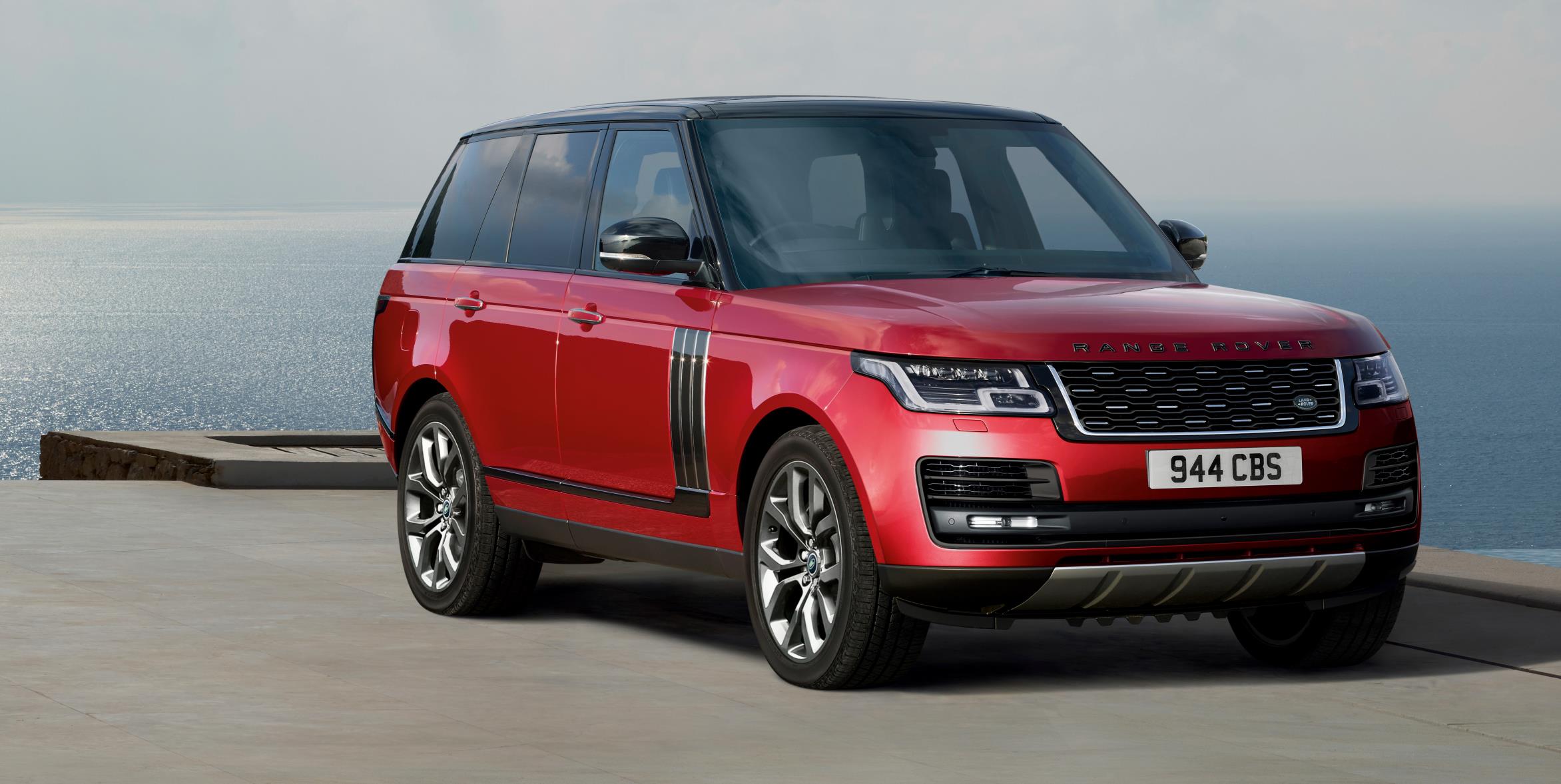
NEW RANGE ROVER TO FEATURE SIGNIFICANT CABIN, TECHNOLOGY AND DESIGN UPDATES IN 2018MY, FOLLOWED BY A PLUG-IN HYBRID MODEL JOINING THE LINEUP IN 2019MY
- Land Rover’s flagship SUV, the 2018 Range Rover, evolves with an updated exterior design featuring new LED headlights and a wealth of new comfort enhancing features
- 2018MY Range Rover offers its customers a sanctuary experience via a new interior with advanced technology and features, including the elegant Touch Pro Duo infotainment system, all-new 24-way adjustment and massage seating, Air Cabin Ionization and Gesture Sunblind operated by advanced gesture control
- New 557hp 2018MY Range Rover SVAutobiography Dynamic mixes sumptuous interior with supercharged V8 performance (0-60mph in 5.1 seconds5)
- 2019MY Range Rover P400e Plug-in Hybrid (PHEV) combines electric and gasoline power for sustainable performance:
- Total power / torque output: 398hp (297kW) / 472-lb. ft.
- Electric-only range: 31 miles (51km)3
- Customers can choose their Range Rover, starting at $87,350[1], with either a supercharged V6 or V8 gasoline engine, a turbocharged V6 diesel engine, and beginning in 2019MY, a new plug-in gasoline-electric powertrain
(MAHWAH, N.J.) – October 10, 2017 – More than ever, Range Rover represents the pinnacle of luxury travel, making every journey a treasured experience whether driving or being driven.
Today, technology drives the next major step for the Range Rover, with a plug-in hybrid electric powertrain providing sustainable luxury with new levels of efficiency and capability complementing its refinement and desirability.
Comfort-enhancing functions transform the travelling experience for the 2018MY Range Rover driver and passengers. The front seats feature an optional 24-way movement thanks to the new seat frames, with wider and deeper foams as well as heated arm rests. In the rear a completely redesigned cabin and seating layout create a tranquil sanctuary with no compromise to the rear load space.
If you’re working while being driven, up to 17 connection points including domestic plug sockets, USB, HDMI and 12-volt are all available; a 4G Wi-Fi hotspot7 for up to eight devices and convenient storage are all designed for the business traveler. The cabin is tailored for relaxation with luxurious seats offering up to 25 massage programs thanks to Hot Stone massage technology within the seat backs.
Wider, softer seats offer sumptuous comfort. Reclining by up to 40 degrees, they make the most of the additional 7.3-in (186mm) legroom (now 47.5-in/1,206mm in total) and can be deployed at the touch of button. The exemplary comfort extends to heated and cooled seats, plus heated arm, foot and calf rests. For additional convenience and personalization, all seat functionality can be controlled via a smartphone app, whether inside or outside the vehicle.
“Our customers are very clear about what they want from any new Range Rover. ‘Don’t change it, just make it better,’ they tell us, so everything we’ve done has been about enhancing our flagship SUV,” said Gerry McGovern, Chief Design Officer, Land Rover. “After nearly 50 years the fourth generation Range Rover is the finest so far, ensuring the original luxury SUV remains the choice for discerning customers the world over.”
The elegance of the interior has been elevated by the seamless integration of the most advanced infotainment system yet created by Jaguar Land Rover. InControl Touch Pro® Duo, combines two high-definition 10-inch touchscreens on the center console working in perfect harmony6. Information can be swiped from one screen to the other, making the layout highly intuitive and engaging to operate.
The new Range Rover has been enhanced with further technologies for greater comfort and convenience:
- Gesture sunblind: opened and closed by an advanced gesture control system that senses an occupant’s hand movement. All it takes to open the blind is a rearward swipe in front of the rear view mirror, and forwards to close
- Activity key: customers can securely lock and unlock their vehicle without the need to carry a conventional key fob
To experience tailored Range Rover luxury and performance in its most dynamic form, customers can now savor the enhanced Range Rover SVAutobiography Dynamic – the most powerful production Range Rover to date. The output from its supercharged V8 gasoline engine is up to 557hp delivering 0-60mph time of 5.1 seconds (0-100km/h in 5.4 seconds)5. Striking design revisions include an exclusive Graphite Atlas mesh grille design with chrome inserts and a revised rear bumper with integrated metal tailpipe finishers.
2018MY RANGE ROVER U.S. MODELS AND MSRP1
| TRIM | POWERTRAIN – OUTPUT | MSRP1 |
| SE | 3.0L S/C V6 Gas – 340hp | $87,350 |
| HSE | 3.0L S/C V6 Gas – 380hp | $94,050 |
| SE Td6 | 3.0L T/C V6 Diesel – 254hp | $89,350 |
| HSE Td6 | 3.0L T/C V6 Diesel – 254hp | $96,050 |
| Supercharged | 5.0L S/C V8 Gas – 518hp | $104,850 |
| Supercharged LWB | 5.0L S/C V8 Gas – 518hp | $108,895 |
| Autobiography | 5.0L S/C V8 Gas – 518hp | $141,995 |
| Autobiography LWB | 5.0L S/C V8 Gas – 518hp | $148,295 |
| SVAutobiography Dynamic | 5.0L S/C V8 Gas – 557hp | $177,200 |
| SVAutobiography (LWB) | 5.0L S/C V8 Gas – 557hp | $207,900 |


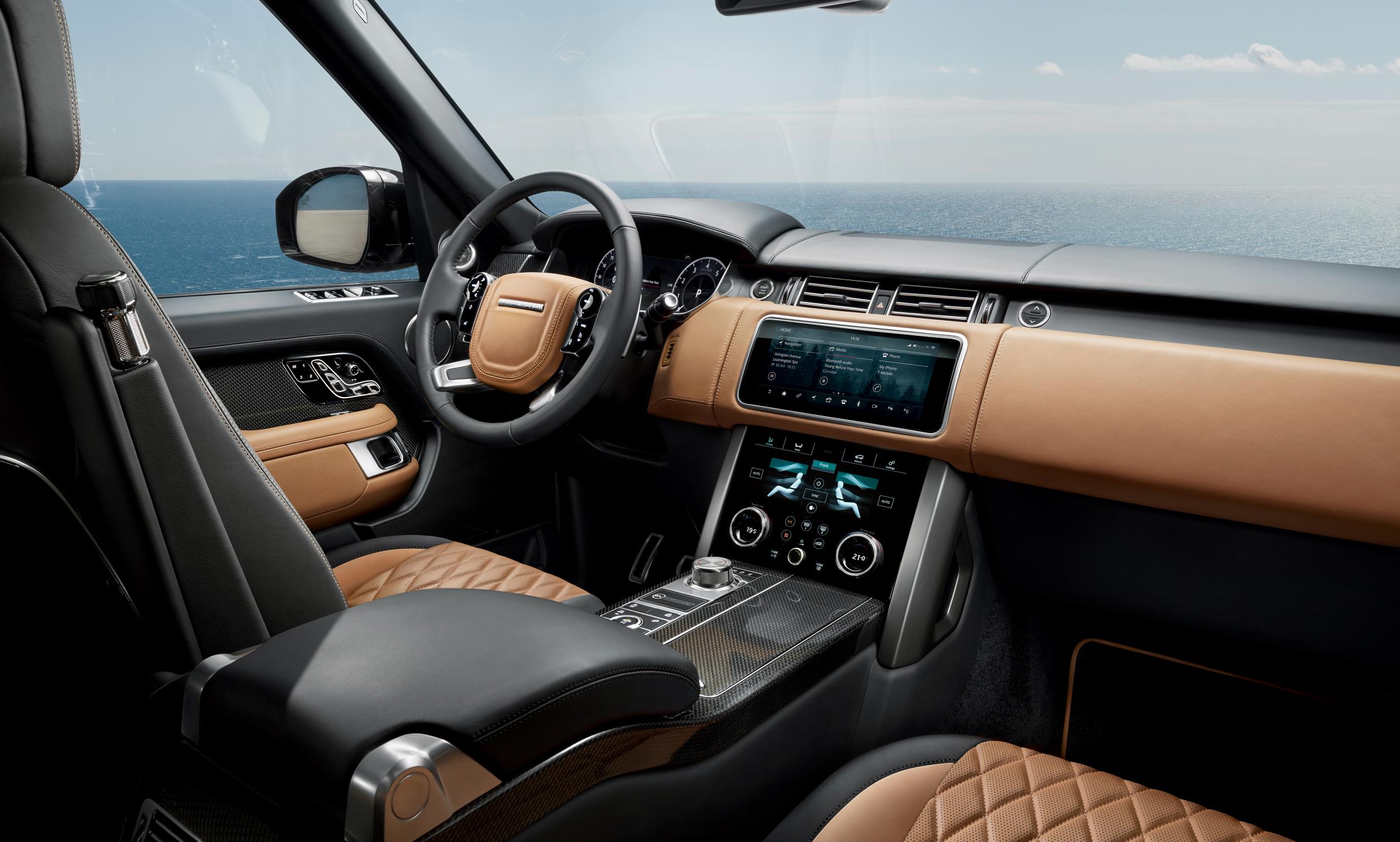

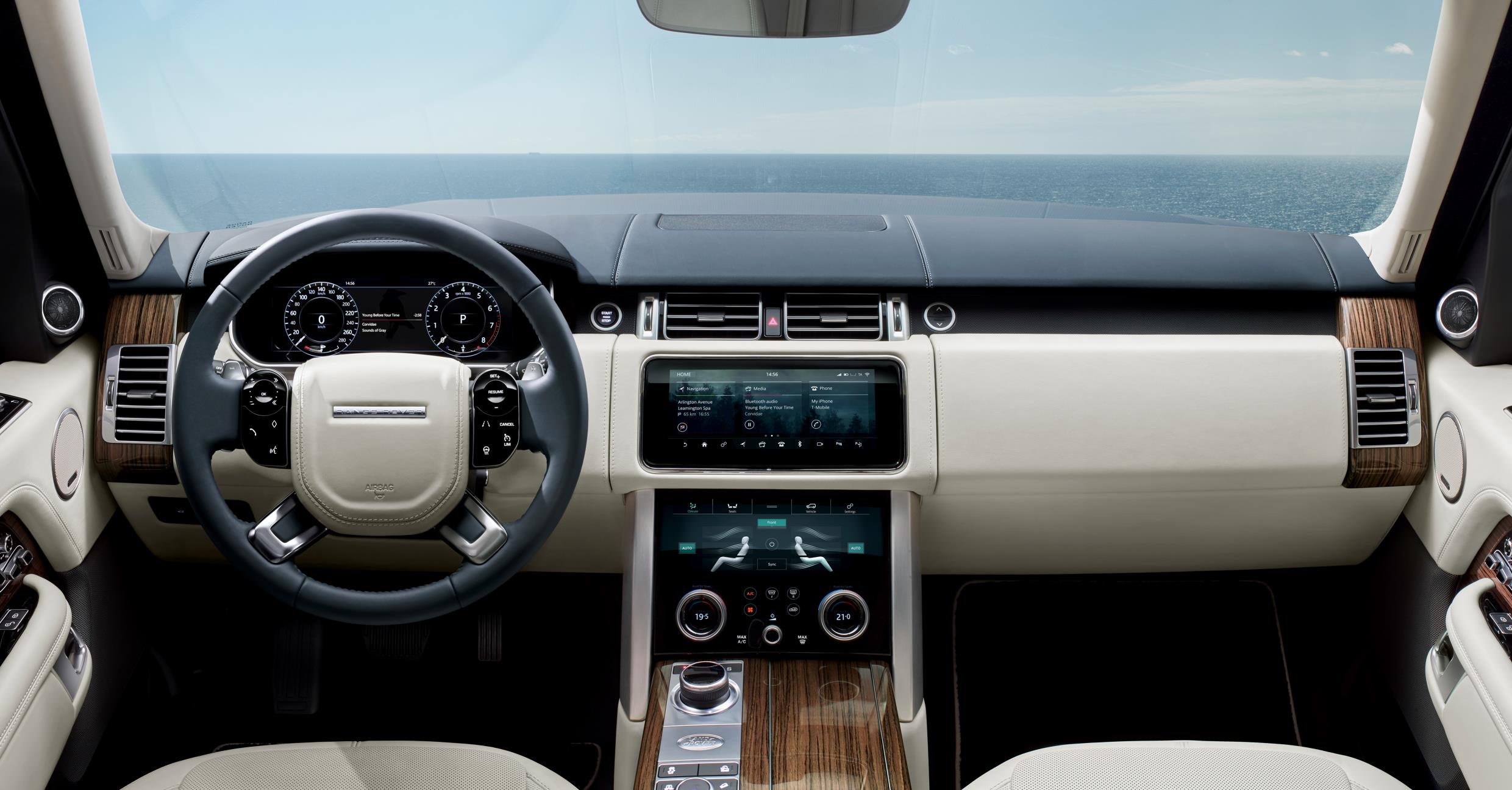
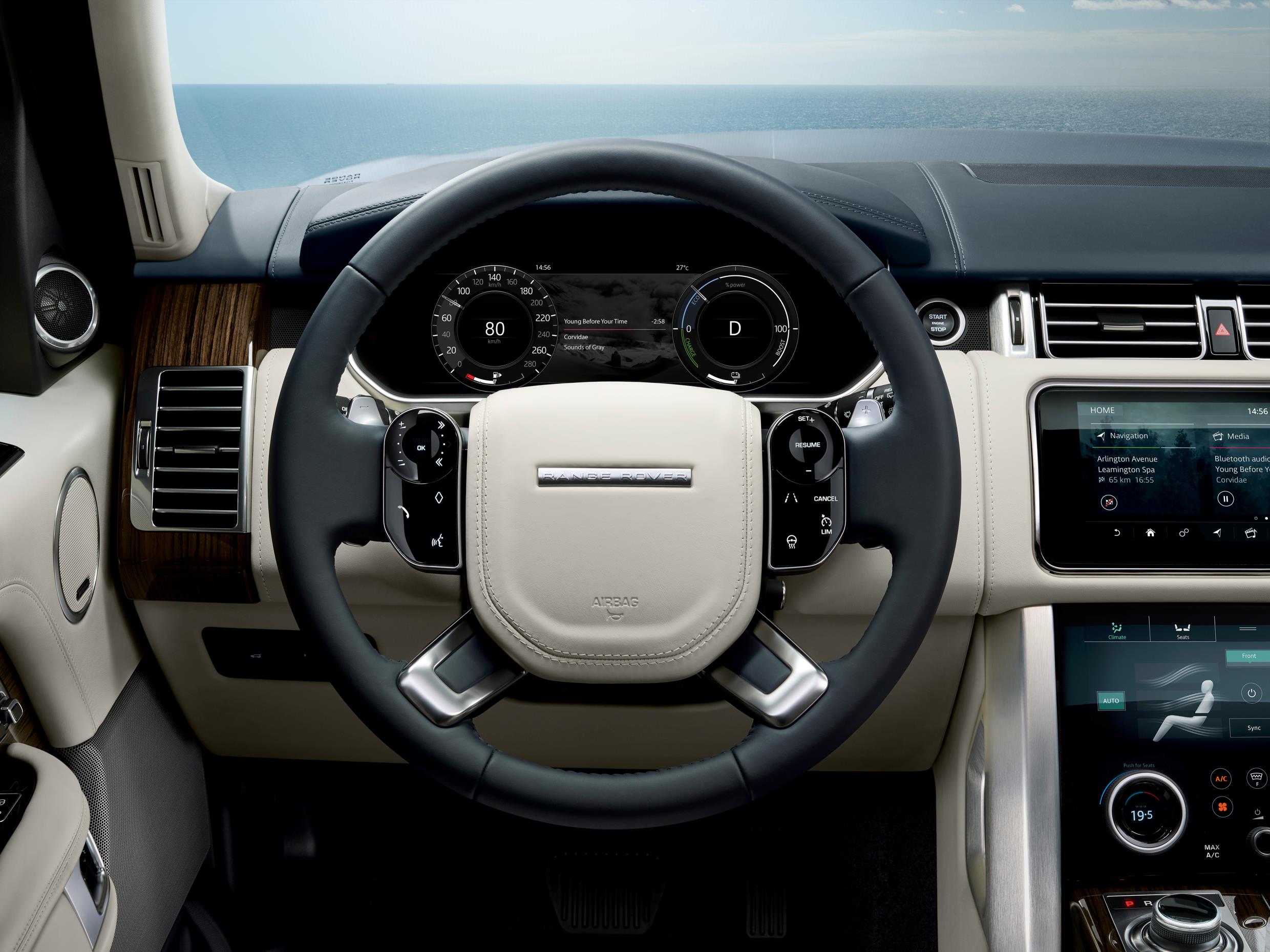

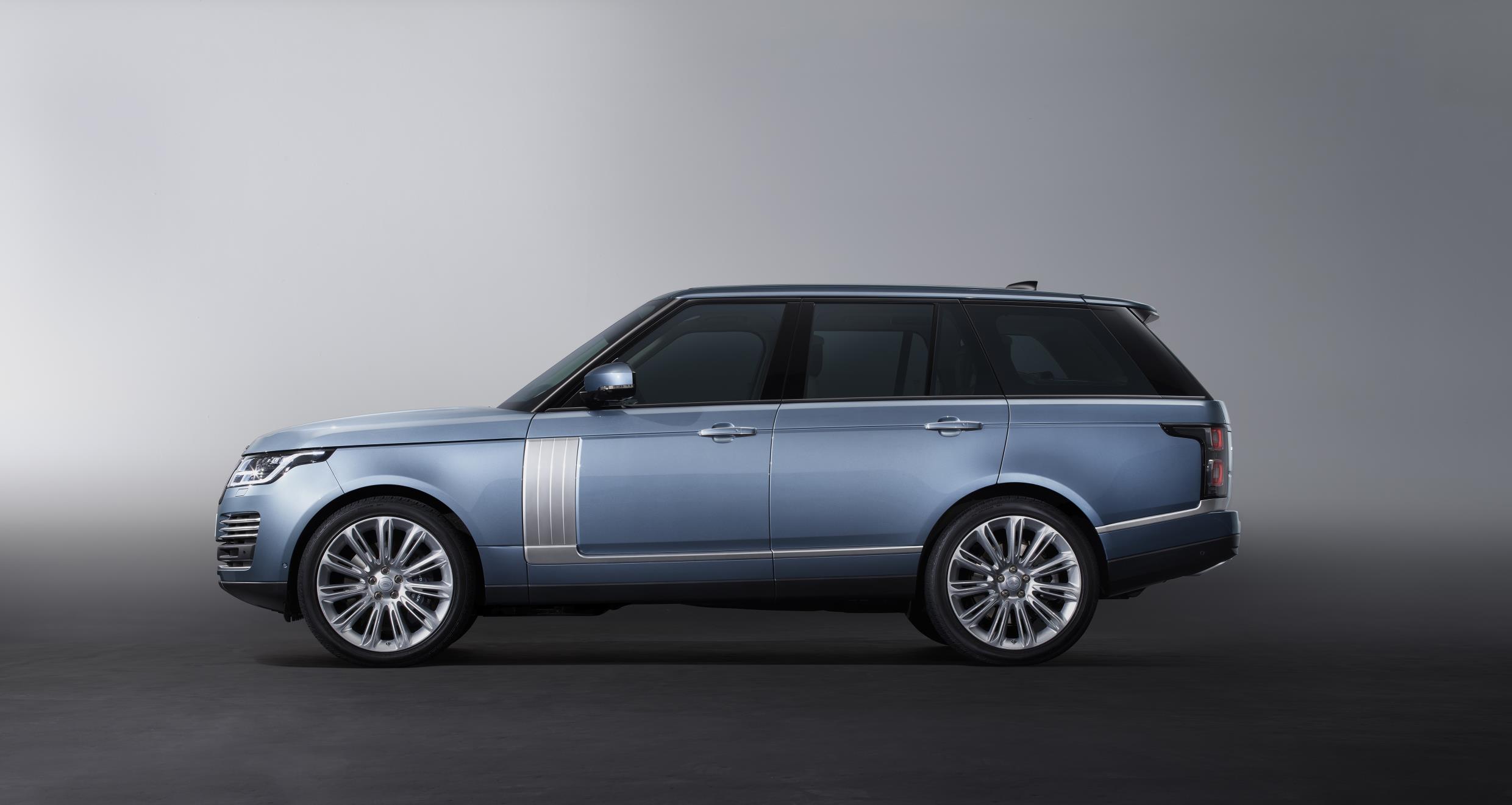
2019 MODEL YEAR RANGE ROVER PHEV
Following the announcement of the new Range Rover Sport plug-in hybrid electric vehicle (PHEV) last week, the brand’s ICE to ACE journey continues, moving from conventional internal combustion engines to connected and electrified vehicles. The Range Rover PHEV and Range Rover Sport PHEV models represent the first steps for Land Rover on the path that will see all new Jaguar and Land Rover vehicles launched from 2020 offering an electrified powertrain option.
The efficient new Range Rover P400e provides sustainable performance by combining a 296hp 2.0-liter four-cylinder Ingenium gasoline engine with a 114hp (85kW) electric motor. The 398hp total available power output4 – available through the permanent four-wheel drive system – delivers 0-60mph in 6.4 seconds (0-100km/h in 6.8 seconds) and a maximum speed of 137mph (220km/h)5.
With an impressive 472-lb. ft. of torque, the new powertrain delivers dynamic performance with traditional Range Rover capability, comfort and refinement.
The Range Rover P400e provides an all-electric range of up to 31 miles (51km)3 without the Ingenium gasoline engine running. For the first time, customers choosing the flagship Land Rover SUV can experience zero-emission driving.
Drivers of the new PHEV model can choose from two driving modes:
- Parallel Hybrid mode (the default driving mode) – combines gasoline and electric drive. The driver can optimize battery charge or fuel economy by utilizing one of two charge management functions:
o SAVE function – prevents the battery charge dropping below a pre-selected level
o Predictive Energy Optimization (PEO) function – entering a destination in the navigation system enables the feature, which utilizes in built GPS altitude data for the selected route, to intelligently combine the electric motor and petrol engine to maximize fuel economy
- EV (Electric Vehicle) mode – enables the vehicle to run solely on the electric motor using the energy stored in the battery, the ideal solution for quiet, zero-emission journeys
The powertrain’s precision and control make for serene progress in various conditions and terrains. The Land Rover Terrain Response® 2 technology has a unique calibration to intelligently and precisely distribute torque from the electric motor, which has no creep speed and is able to deliver maximum torque from zero rpm, to all four wheels. This gives greater control during low-speed off-road maneuvers, confirming the Range Rover brand’s outstanding breadth of effortless capability.
The Range Rover 2.0-liter Ingenium gasoline engine is longitudinally mounted, with the 85kW electric motor housed in the ZF® automatic eight-speed transmission at the center of the vehicle alongside the 7kW on-board charger. The access point for the cable is at the front of the vehicle, while the prismatic cell lithium-ion battery is mounted at the rear beneath the trunk floor.
Designed and engineered by Jaguar Land Rover in the UK, the new Range Rover will be produced at the company’s Solihull production facility and is available to order now, with first deliveries from the end of 2017 (market dependent).

- SUSTAINABLE LUXURY
- DESIGN
- TECHNOLOGY
- ENGINEERING
- RANGE ROVER SVAUTOBIOGRAPHY DYNAMIC
- SUSTAINABLE LUXURY
Unrivalled capability and peerless refinement meet sustainable luxury with the introduction of plug-in gasoline-electric power to the 2019 MY Range Rover[2]. The first Plug-In Hybrid Electric Vehicle (PHEV) powertrain available from Jaguar Land Rover is capable of up to 31 miles (51km)[3] with zero tailpipe emissions when driven in all-electric mode, providing sustainable performance like never before.
1.1. Plug-in Hybrid Electric Vehicle
The 2019 PHEV model, badged P400e, combines an advanced 296hp four-cylinder Ingenium gasoline engine with a 114hp (85kW) electric motor. This transformational technology is powered by an advanced 13.1kWh lithium-ion battery giving a total available power output of 398hp[4] from the permanent four-wheel drive (4WD) system.
Together they drive the brand’s performance SUV from 0-60mph in just 6.4 seconds (0-100km/h in 6.8 seconds) for SWB variants and to a top speed of 137mph[5]. With an impressive 472-lb. ft. of torque, the new powertrain mixes dynamic and sustainable performance with traditional Range Rover capability, comfort and refinement.
The combination of Ingenium gasoline and electric power can be used in two driving modes: Parallel Hybrid mode (the default driving mode) and EV (Electric Vehicle) mode.
In Parallel Hybrid mode the 2019 PHEV model can intelligently and seamlessly combine the two power sources to deliver efficient performance. By using its electrical energy reserves intelligently the P400e is able to offer the power and capability customers demand from a Range Rover.
On longer journeys, customers can use the SAVE function to deploy the EV-only range for a specific part of their journey, for example, when entering congested urban areas, while the Predictive Energy Optimization function uses the vehicle’s Navigation system to enhance fuel efficiency.
In EV mode the P400e can be driven up to 31 miles (51km)3 with zero-emissions when fully charged. This driving mode is manually selected using a button on the console and gives the new PHEV model a top speed of 85mph (137km/h)5 when using only EV power.
The intelligent system can also capture and store the energy generated when braking to help recharge the battery.
The 2.0-liter Ingenium engine can be found under the clamshell hood, with the 85kW electric motor housed on the transmission, at the center of the vehicle.
The access point for the 7kW on-board charging socket is located behind the Land Rover badge to the right of the grille, at the front of the vehicle, while the 13.1kWh prism-shaped lithium-ion battery is mounted at the rear beneath the trunk floor.
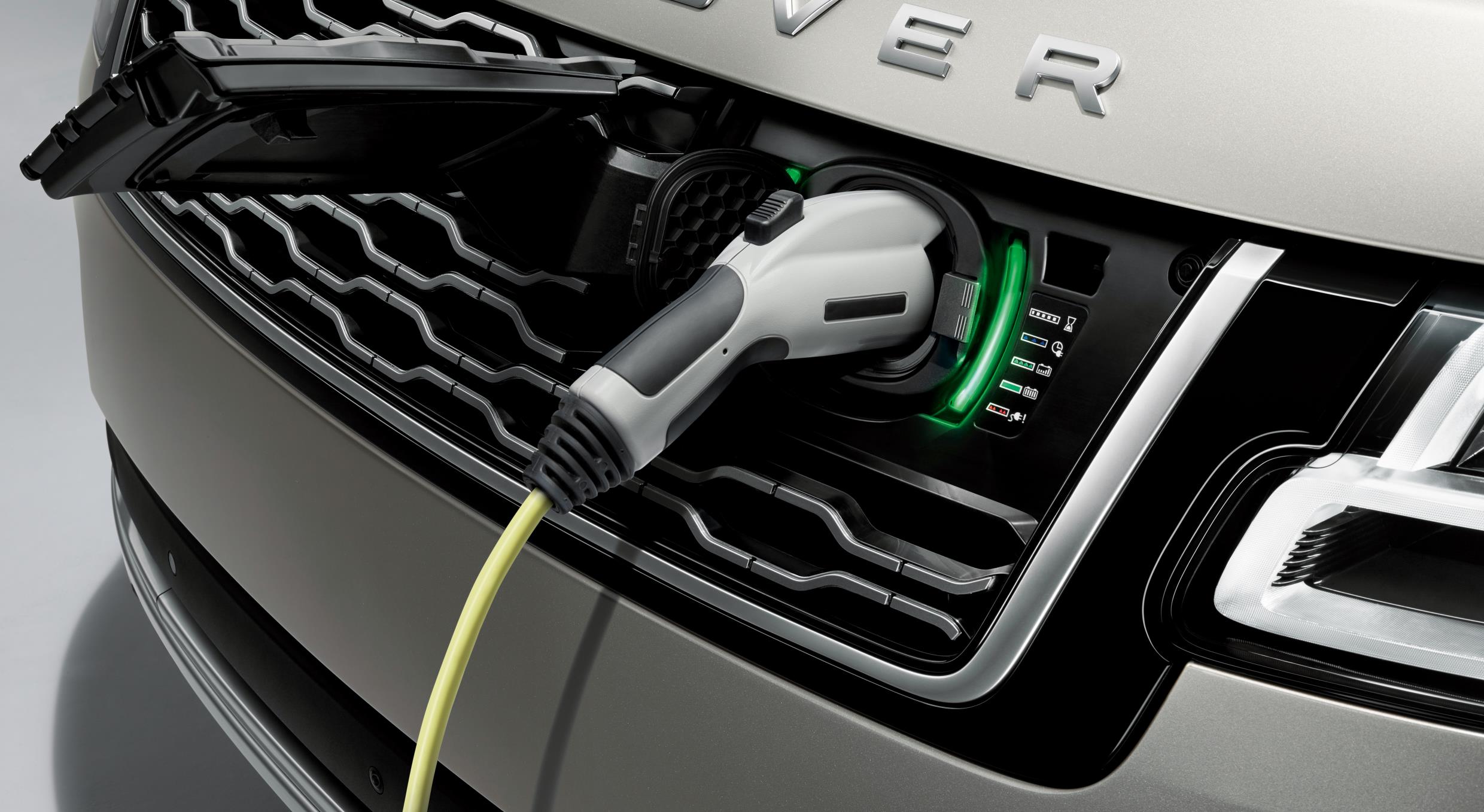
1.2 Charging
The new 2019 Range Rover PHEV model features a plug-in charge point behind a discreet panel on the grille, a 7kW on-board charger, and a charging cable. Based on market and type of hardware used, the Range Rover P400e is suited to deliver full battery charging overnight using a domestic plug socket.
The PHEV model is available with three types of cables and includes a home charging lead, which connects to domestic power supplies, as standard.
The public charging cable, which is compatible with AC wall boxes installed at domestic and business premises and service stations, makes it ideal for charging on the move.
Timed charging is also available via the vehicle’s infotainment system, which allows owners to choose the most appropriate time to begin charging – perfect for customers who want to plug in when they return home, but want to wait until a less costly energy price is available.
Owners can monitor the charging status via two illuminated strips that sit either side of the charging socket behind the grille. A white light signifies the vehicle is connected but indicates that charging has not started, while a blue light shows that timed charging is set but not underway. A flashing green signal shows the car is charging, while a solid green light indicates the battery is fully charged.
When customers are away from their vehicle, they can use the InControl Remote™ app to monitor the charge status, as well as receive an alert if there is an error, or the cable has been removed forcibly.
1.3 Functionality
The gasoline engine and electric motor of the P400e have been calibrated to work in harmony regardless of the state of battery charge, with two charge management functions available when driving in Parallel Hybrid mode:
- Predictive Energy Optimization helps to make the most of both power sources and is activated when the driver enters a destination into the navigation system. By analyzing factors such as traffic conditions, gradient of the route and whether it is an urban or rural environment, the PHEV system will seamlessly combine electric and Ingenium gasoline engine power to optimize efficiency.
- The driver-selectable SAVE mode is accessed through the Touch Pro Duo system and maintains battery charge at the point of activation. At this point, the vehicle will only use the electric motor once it has replenished enough energy via regenerative braking or charging, allowing customers to conserve electric power to be used on a specific part of their journey.
The operation of the PHEV powertrain is supported by the latest ZF8P75XPH eight-speed automatic transmission, which combines lightweight construction and highly efficient operation to reduce fuel consumption while delivering the supreme refinement and assured responses Range Rover customers expect. The advanced transmission adapts to individual driving styles, so dynamic driving is automatically accompanied by quicker gear changes.
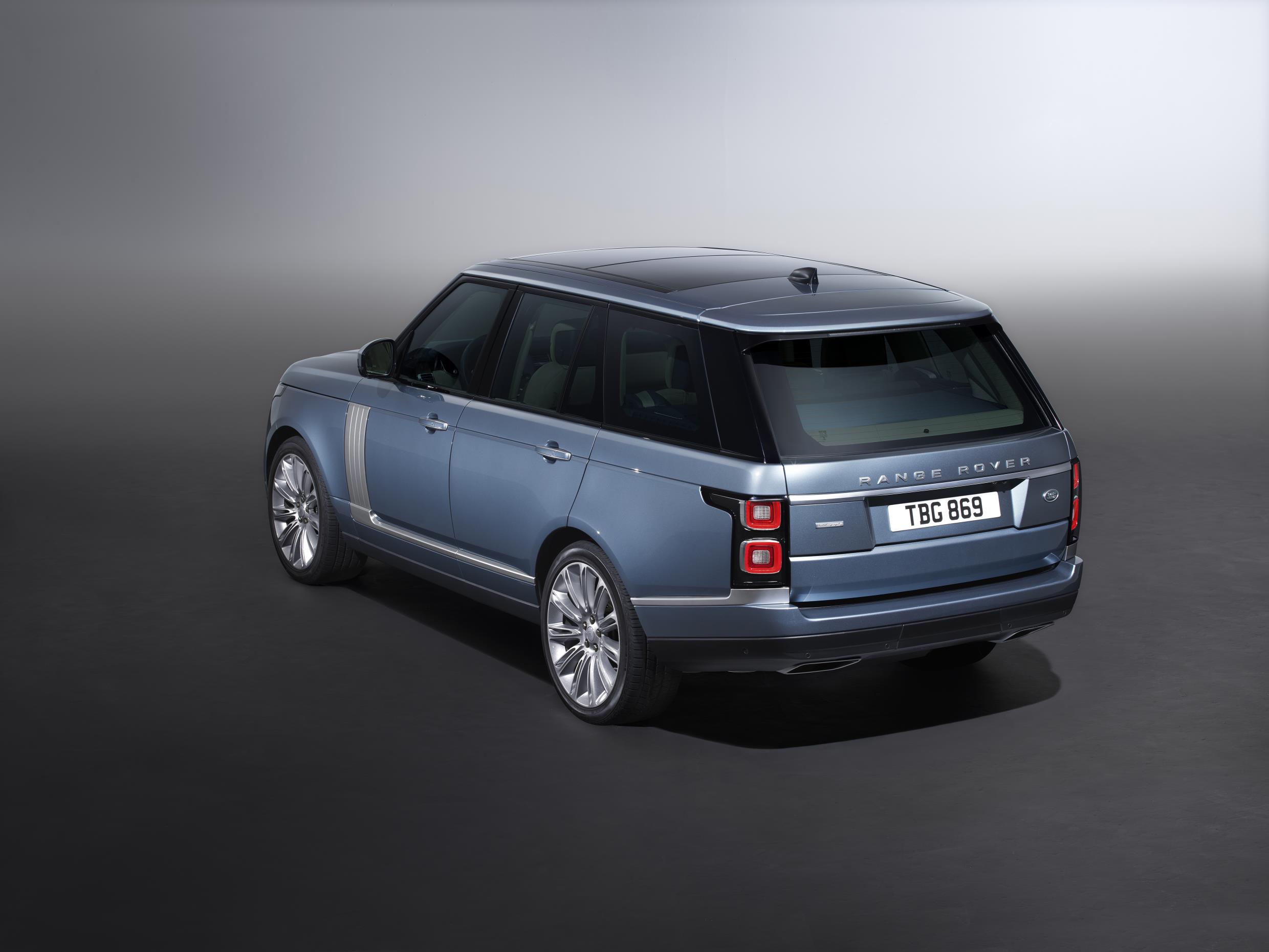
- DESIGN
In almost 50 years of Range Rover history there has been one constant – exceptional design. The new Range Rover represents a sophisticated evolution of the SUV’s effortlessly elegant exterior and luxurious interior.
2.1 Enhanced exterior
Subtle exterior design changes give the flagship Land Rover SUV an even more prestigious appearance and presence.
The updated grille incorporates a Gloss Black surround and Atlas mesh (varies by model) to provide a more modern appearance while the all-new front bumper features widened vent blades. The hallmark clamshell hood is both physically and visually longer, giving the driver a cleaner view ahead.
“Our approach was to find ways of enhancing the Range Rover’s traditional appeal without making too dramatic a change,” said Gerry McGovern, Chief Design Officer, Land Rover. “We therefore set out to create an uncluttered graphic that embodied a cleanliness and quality of design, with flush detailing and a greater emphasis on overall cohesion. The result is the best looking Range Rover yet.”
Refreshed lower side accents and vent graphics incorporate two alternative design schemes – Satin Body-Colored and Atlas Accent Finish – that further highlight the vehicle’s distinctive profile.
At the rear the updated bumper integrates the exhaust tailpipes across all Range Rover powertrains. In addition, six new alloy wheel designs are available alongside two new metallic paint colors; Rossello Red and Byron Blue.
Two design packs are also available:
- The Black Exterior Pack changes key components to Narvik Black, including the hood and tailgate lettering, grille mesh and inner surround, front tow eye cover, door mirror caps, side vent graphic and accent graphic, the tailgate finisher, and the door handle upper and lower on HSE and Autobiography
- The Shadow Exterior Pack features a similar set of upgrades (less the door mirror caps and tow eye cover) but uses Shadow Atlas as its accent color
The introduction of LED headlight technology gave the Land Rover design team greater flexibility and the opportunity to develop a sharper, thinner new headlight design and provide superior illumination.
The standard Premium headlight package features 24 LEDs per vehicle, with Signature Daytime Running Lights and optional Auto High Beam Assist8.
2.2 Interior refinements
The interior of the new Range Rover is more luxurious, adaptable and beautifully crafted than ever. Each sumptuous detail has been carefully designed and precision engineered with the comfort and enjoyment of its occupants in mind.
Demonstrating the luxury and comfort evident throughout the vehicle are the striking new seats, which provide greater recline, legroom and foot space than before. The driver and front passenger seats are now asymmetrically wider on the outside to enable easier access to the vehicle. The richly luxurious designs feature lines, leathers and layers of deep cushioning that create a cosseting lounge-style environment.
The front seat frame has evolved to provide a wider foundation, while the foams are deeper and new comfort interlayers enrich driver and passenger comfort. High quality leathers have been specially selected to ensure customers always experience world-class comfort.
Convenience has also been enhanced with the controls for the seats relocated to the new door panels. The shift is designed to accommodate the wider seat bases and make it even easier and more intuitive for customers to make adjustments.
“The new interior provides a more refined and spacious cabin than ever, with a focus on improving the customer experience from the very first contact,” said Gerry McGovern, Chief Design Officer, Land Rover. “With this in mind, we have used higher quality materials to create a truly luxurious experience. The wider seats and enhanced stowage are obvious changes, but it is the little touches throughout that combine to make this such a compelling design.”
New functionality has also been embedded into the Grained Leather 16-way electronically-adjustable front seats to further improve the passenger experience with heating and memory functions.
For the next level in comfort, the optional 20-way Oxford Leather front seats are upholstered even more luxuriously and provide greater personalization opportunities. The leg cushions extend to support the thighs, while adjustable bolsters support occupants and can be equipped with cooling and massage functions.
With 24-way adjustment, the top-of-the-range Semi-Aniline Leather front seats are the most advanced option, providing upper shoulder support for total comfort, alongside integrated climate and massage settings, and the option of a stress-relieving Hot Stone Massage function.
This high-end functionality extends to the rear, where the seats feature a 60:40 split-fold design. Wider and offering substantial legroom, they also have power recline controls moved to the door for greater convenience.
Customers can choose powered reclining seats in Oxford or Semi-Aniline Leather with Intelligent Seat Cargo Mode. This allows for effortless folding of the flexible 60/40 seats and access to the load space.
The powered rear seats can be folded using the infotainment touchscreen, providing load-through access and enabling the vehicle to offer comfort and refinement without compromising practicality.
To reduce sound intrusion, the Range Rover also now features 0.2-in (6mm) thick glass – 20 percent thicker than previously fitted – to ensure road, engine and wind noise does not disturb occupants, whether they’re working or relaxing.
2.3 Executive Seating
New Executive Seating is standard on Autobiography derivatives, elevating front and rear seat luxury with Semi-Aniline Leather and additional functionality.
New wider seat frames, deeper foams and plush comfort interlayers combine with a seat cushion that leads into a premium C-pillar treatment to create the impression of a luxurious wraparound lounge-like interior.
This sensation is enhanced by a new power-deployable center console. Previously extending the full length of the rear cabin and permanently fixed, the new console is now available at the touch of a button and features a break at the center footwell to enable rear passengers to easily exit from either side of the vehicle. When the center console is stowed, the rear cabin is still able to accommodate three passengers in comfort so versatility is uncompromised.
When in use the powered rear center console envelops occupants in luxurious leather providing an elegant location for personal items in a standout example of the evolution of the vehicle’s interior. Passengers using the Rear Executive Class Seating can also recline their seatbacks further than ever, up to 40-degrees, and make the most of the additional 7.3-in (186mm) legroom (47.5-in/1206mm in total) provided by the long wheelbase model. The cosseting headrests have eight different settings to deliver optimal comfort.
The front passenger seat can be moved forwards to maximize space and a heated arm, calf and foot rest provides ergonomic support when reclined for a more immersive, relaxing experience.
The most comfortable position in the rear can be achieved by a single button push, which moves the front seat forward and folds the headrest for forward visibility, reclines the rear seat and folds down the footrest (found in the rear of the front seat) and raises the calf rest, as well as deploying the center console.
Rear seat passengers have control of the front seats, when unoccupied, from switches found on the door for the ultimate in comfort and convenience.
The sense of serenity can be taken to new heights for front and rear passengers with the new massage function. With 14 cells in each seat, the system can deliver more varied and relaxing massages than ever before.
The new optional Hot Stone Massage function focuses heat into the four central heated massage elements while retaining a cool or ambient temperature throughout the rest of the seat, so passengers enjoy a more intense and effective experience. The seats produce continuous rolling waves across the back and gently apply heat to the spine.
The seat position, massage functionality, temperature of the seats and rear cabin climate control can all be managed from brand’s new Comfort Controller smartphone app, which gives passengers control of the executive rear seats.
Not only does it allow users to control the massage type and intensity of vibration, it also enables customers to set a temperature and fan speed for the rear cabin. Heating and cooling functionality within the seats can also be controlled, as can the position – ideal if you’re fully reclined and the door controls are out of reach. The finishing touch to the tranquil cabin of the new Range Rover is the integration of heating into all armrests, front and rear.
The richly relaxing environment now includes four new veneers among a choice of seven, the latest enhancements provide a luxury experience with tailored comfort like never before.
The rear bulkhead in Rear Executive Seat allows passengers to recline without compromising the loadspace.
Innovative storage
The new Range Rover is more luxurious than ever but the pursuit of perfection here doesn’t come at the expense of practicality. Passengers benefit from a series of flexible new storage solutions, including front cup holders that can be slid forward to reveal a deep storage area, up to 274.6-cu.in. (4.5-liter), in the center console with a dedicated USB charging port.
In addition, the 481.5-cu.in (7.89-liter) console features a new double-level hinged tray when open, perfect for keeping wallets and mobile phones secure and out of sight.
The lockable glove box provides enhanced security, while customers can specify an optional cooler compartment or a new refrigerator in the front center console, to provide the luxury of cooled drinks on demand. The fridge holds four 16.9-oz (500ml) bottles and chills to 41⁰F (5⁰C) with the ability to perform a rapid cool.
The front and rear door pockets are re-shaped to hold larger (1.5-liter) bottles than before and in long wheelbase models, a rear cubby box has 170.9-cu.in (2.8-liters) of additional storage, while the rear of the central console houses a domestic plug socket. A second domestic socket can be found in the load space, making it possible to keep laptops charged on the move.
Air quality
A new cabin air ionization system, called Nanoe™, is central to the increased focus on passenger comfort. The system ionizes particles in the air, allowing them to attach to surfaces thus helping to cleanse the cabin air. It can be switched on or off via the Climate screen.
Gesture sunblind
Convenient technology is at the heart of the new Range Rover, exemplified by the powered roof sunblind, which can be opened and closed using an advanced gesture control system capable of sensing hand movements.
All it takes to open the sunblind is a rearward swipe in front of the rear-view mirror, while a simple forward motion will prompt the blind to close. Comfortable and convenient for passengers, this intuitive system also assists in reducing potential distraction of the driver.
In addition, an intelligent function can close the blinds automatically when all passengers have disembarked and the vehicle is locked keeping the interior cool in warm weather. When the driver opens the door, the sunblind will automatically and smoothly slide open. Customers can still operate the sunblind using conventional buttons, if preferred.
Ambient lighting
The new Range Rover gives customers even greater control over the cabin environment thanks to new three-zone ambient lighting.
Occupants can tailor the atmosphere to create a calm, relaxing and stress-free environment by configuring the color (from a choice of 10) and intensity of lighting via fully controllable tri-color LEDs.
Lighting elements are split across the upper zone, with uplighters in the B-pillars. The mid-layer controls content in the doors and center console, while the lower level manages the soft, diffused light in the footwells.
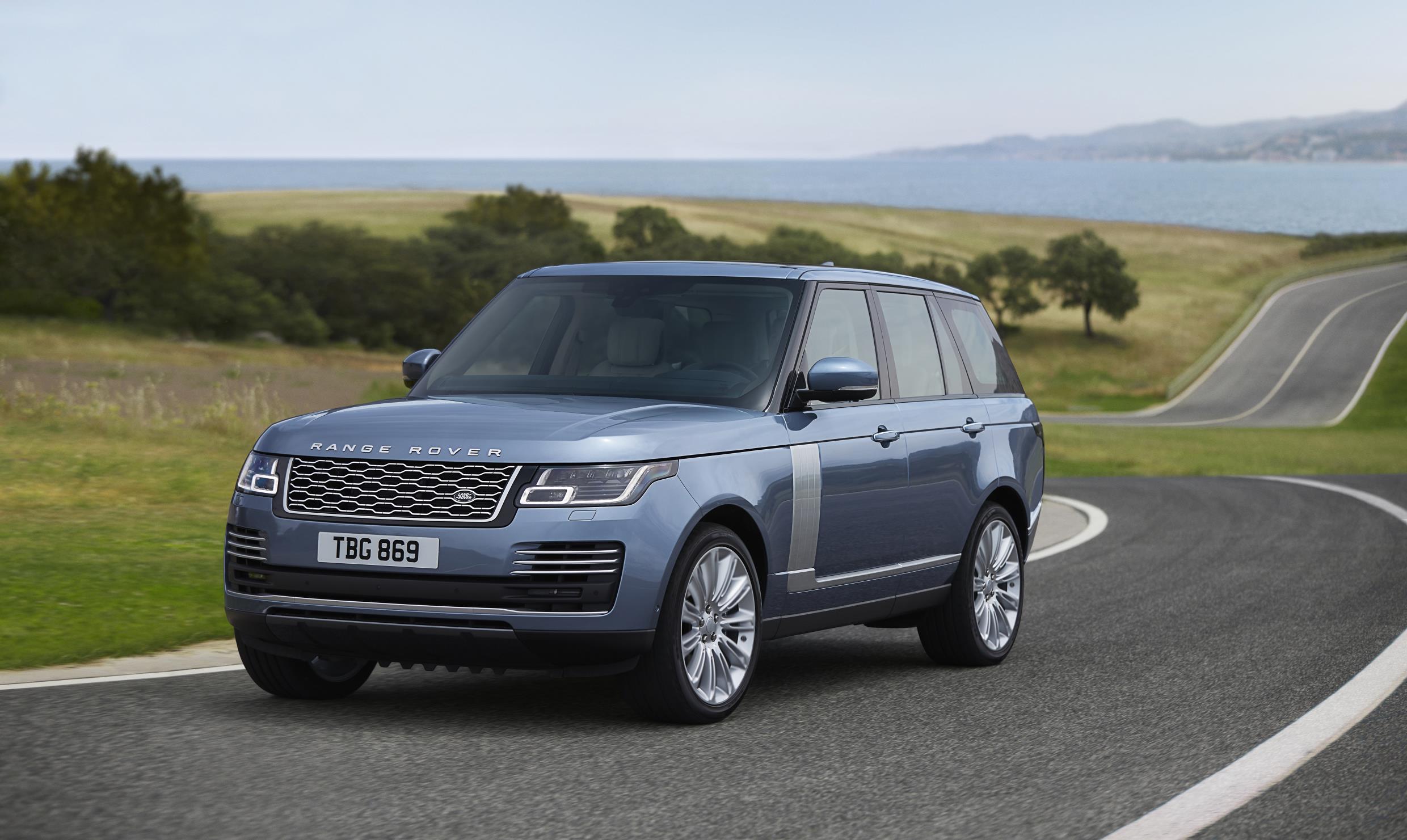
- TECHNOLOGY
The Range Rover has always been the pioneer of new and innovative technologies. The new model maintains this rich pedigree with the introduction of Land Rover Touch® Pro Duo™ infotainment6.
3.1 Touch Pro Duo
Two high-definition 10-inch touchscreens form the centerpiece of the minimalist cabin of the Range Rover as part of Touch Pro Duo, the most advanced infotainment system created by Jaguar Land Rover to date. Fast and intuitive, it combines finely engineered physical controls and a beautiful digital interface to deliver a truly connected driving experience[6].
The system looks simultaneously futuristic and elegant with its interlinked 10-inch touchscreens providing superior clarity and ease of operation with familiar tap, swipe and pinch-to-zoom control gestures on the upper screen. The customizable home screen also allows customers to create shortcuts to preferred features6.
Touch Pro Duo can dual-task for the driver, keeping the mapping information displayed on the upper touchscreen, while providing easy access to further features on the secondary lower screen. By dividing information and controls logically between the two screens, the new Range Rover achieves a more intuitive user experience.
The upper screen on the central console can be angled to counter glare and improve visibility while the fixed lower 10-inch display manages more functional tasks such as the climate control, seat and vehicle settings. This screen can also be used to manage media and phone functionality via specialist widgets when the upper screen is in use.
Key to its design are two rotary Dynamic Dials within the lower screen, which can be used to control the cabin temperature, fan speed, seat climate and massage functions, as well as Terrain Response® settings6.
3.2 Driver interface
The drive for enhanced customer convenience extends to the instrumentation, which is provided by an all-new 12-inch high-resolution Interactive Driver Display with dual dial, single dial and extended mode views available. Other frequently used features – including phone, navigation and media settings – can also be managed using this innovative new cluster.
In addition, a next-generation head-up display system puts vital information just where the driver wants it, using 10-inch full-color projection with superior clarity and definition. It presents essential information on the windshield, keeping vehicle speed and navigation directions in view at all times. Other updates can also be shown, including adaptive cruise control settings and Advanced Driver Assistance alerts such as signals from the traffic sign recognition system8.
The graphics appear to hover beyond the windshield thanks to an increased perceived projection distance, to help prevent the driver’s eyes from having to constantly refocus.
The full-color image is generated using four super-bright LEDs and a high-resolution TFT LCD screen. The image is sharp, bright and is large in size, allowing customers to adjust the layout, height and brightness of the display.
3.3 Convenience features
Connectivity and convenience are integrated at every step. Even the steering wheel controls feature intuitive new capacitive switches with dynamic illuminated icons to make operating various vehicle features from behind the wheel simpler.
The user-friendly switches provide full control of the instrument cluster, including media playback, phone, cruise control and heated steering wheel settings, plus a shortcut to a feature of the driver’s choosing. The capacitive surface also allows users to scroll through menus by finger or thumb.
The Range Rover now also benefits from the available Remote Intelligent Seat Fold technology, allowing customers to reconfigure the front passenger and second-row seats remotely via the InControl Remote smartphone app.
The new Range Rover also provides passengers in the second row with an optional 10-inch rear seat entertainment display that includes touchscreens for the first time, offering enhanced clarity and ease of use. Powered by an advanced quad-core processor, the system is linked by an ultra-fast Ethernet network and elevates the travelling experience for rear passengers.
With up to 17 (18 on the LWB) connection points integrated discreetly throughout the cabin, the new Range Rover is perfectly equipped as a mobile workspace and entertainment hub.
This is thanks to two USB ports, an HDMI port and a 12V connection point in the front console cubby box – there is also a 12V socket in the glove box and a USB point in the storage area underneath the cupholders.
For rear passengers, two 12V charging ports, a domestic plug socket, two USB ports and HDMI points are available, while customers can also specify a12V and a second domestic plug socket in the loadspace to keep laptops and other devices charged.
In long wheelbase models, an additional USB charge point can be found in the storage box at the rear of the center console.
In addition, there is provision for up to eight 4G Wi-Fi connections, which ensures continuous connectivity on the move[7].
The latest online media functionality from Land Rover now allows for the aggregation of numerous content providers and their personalized content – such as Deezer and TuneIn – giving customers access to more than 40 million music tracks and four million on-demand programs and podcasts. For the first time, these can be accessed directly from the vehicle without the need for a smartphone – providing a seamless and integrated experience.
For extra convenience, the brand’s innovative Activity Key wristband is available on the Range Rover Sport for the first time, allowing customers to lock and unlock the vehicle without using the standard key fob. Perfect for runners, swimmers or cyclists who don’t want to carry a traditional key while exercising, the durable Activity Key is fully waterproof to depths of 59ft (18m).
To lock or unlock the vehicle, the Activity Key must be held within 1.2-in (30mm) of the second “R” of the Range Rover badge on the tailgate and, once activated, the main vehicle fob is disabled and can be left safely inside the cabin.
3.4 Driver assistance technologies
The suite of driver assistance features on the Range Rover have been restructured to be even more intuitive for owners with a series of feature-rich packs that can be specified as needed.
Core features such as Rear Camera, Lane Departure Warning, Emergency Braking, Front and Rear Park Distance Control, Cruise Control and Speed Limiter are all fitted as standard[8].
The optional Drive Pack adds features to inform and equip customers for any journey. Central to this are Blind Spot Monitor, Adaptive Speed Limiter and Driver Condition Monitor, while Traffic Sign Recognition features enhanced accuracy in its ability to read roadway signage8.
The optional Drive Pro Pack adds High Speed Emergency Braking, Blind Spot Assist and Lane Keep Assist. There is also an improved Adaptive Cruise Control with Queue Assist, which uses a forward-looking camera and improved radar system8.
In addition, there is the option of the Park Pack, which includes a 360-degree Parking Aid, Reverse Traffic Monitor and Clear Exit Monitor, which alerts passengers exiting from the rear doors to any hazards approaching from behind. If a vehicle is detected, a light flashes on the door to notify those attempting to disembark8.
The optional Park Pro Pack includes all of the Park Pack features, in addition to Park Assist. This is a suite of advanced parking features that aid parallel and perpendicular parking8.
3.5 Meridian Audio Systems
Meridian again provides a suite of leading audio systems. These are available with three levels of functionality from the 380W, 825W surround or 1700W Signature Sound Systems, providing 13, 19 and 29 speakers respectively and including a dual channel subwoofer in each.
All three have been designed with meticulous attention to detail and a focus on finding optimum positions for every speaker around the cabin to deliver three-dimensional sound quality.
4. ENGINEERING
Central to any Range Rover has always been its ability to handle various types of journeys. Thanks to the vehicle’s construction, lightweight suspension and advanced technologies, the new Range Rover provides confident and serene performance in various situations.
4.1 Capability
Exceptional ride quality, over various terrain and conditions, is a core part of the Range Rover experience. The advanced suspension system combines poise and stability with exceptional ride isolation for flat, confident cornering and a natural and intuitive feel behind the wheel.
Comprising a lightweight front and rear design, the suspension layout complements the advanced aluminum construction of the car perfectly. It is a fully independent layout featuring a wide-spaced double wishbone arrangement in the front and an advanced multi-link layout at the rear.
In order to achieve the perfect balance of agility, composure and comfort, Land Rover engineers focused on optimizing chassis stiffness and fine-tuning the steering system to deliver the exhilarating driving experience demanded of the Range Rover.
The chassis can be managed via a number of advanced technologies. Dynamic Response enables a driver to independently control the front and rear axles with an enhanced active roll control system8, which allows for low-speed agility and increased stability at speed.
This is complemented by an Active Rear Locking Differential to further optimize traction and stability in corners, while Adaptive Dynamics provide continuous variable damping for a supple, absorbent and composed ride8.
Electric Power Assisted Steering utilizes variable-ratio speed-sensitive assistance to deliver a relaxed, natural and intuitive character with a faster steering ratio. The result is a luxury SUV with excellent stability and a relaxed character at higher cruising speeds.

All-terrain capability
The legendary off-road capability of the Range Rover is taken to new heights with the introduction of the gasoline-electric P400e hybrid model2, as its electric motor offers greater control of torque from a standstill. This facilitates improved low-speed control and superior pull-away on low-grip surfaces. The low range transmission can also be operated in pure EV mode for all-terrain journeys.
The Land Rover Terrain Response® 2 technology has been retuned to intelligently and precisely distribute torque from the electric motor, which has no creep speed and maximum torque from zero rpm, to all four wheels, giving greater control during low-speed off-road maneuvers, reaffirming its outstanding breadth of capability8.
Handling and performance across the model range can also be managed via a series of Terrain Response 2 programs. Featuring a new Comfort mode, which calibrates the suspension settings to optimize ride comfort, while the Dynamic setting gives the driver a more dynamic ride.
These modes exist alongside Grass/Gravel/Snow, Mud/Ruts, Sand, Rock Crawl and Eco settings.
In Eco mode, the driver receives instantaneous feedback and guidance on driving more efficiently, while minimizing electrical power consumption and highlighting the effects of certain features on fuel efficiency. It also softens the throttle pedal response, modifies the automatic transmission shift pattern and switches off heating for the door mirrors, steering wheel and seats to optimize fuel efficiency9.
The new Range Rover also benefits from the Jaguar Land Rover Low Traction Launch System, which helps to exploit all available traction when pulling away on low friction surfaces. Unlike All-Terrain Progress Control, the company’s all-terrain cruise control technology, Low Traction Launch relies on the driver by initiating a unique throttle map to provide a more usable torque curve. The system is specifically designed to help drivers pull-away from a standstill on low friction surfaces such as wet grass, loose gravel and snow8.
Hill Descent Control (HDC®) is also fitted as standard, while excellent ground clearance and a smooth underfloor help the new model negotiate rough terrain8.
Wading capability for the P400e is also uncompromised with a maximum depth of 35.4-in (900mm) shared with the rest of the Range Rover line-up. For deep water wading, it is recommended that the Ingenium gasoline engine is running to prevent water entering the exhaust system8.
Four-wheel drive
The four-wheel drive capability of the new Range Rover is managed by a new transfer case design, which has a smart actuator rather than a separate motor and ECU. This results in a 3.3-lb (1.5kg) reduction in weight and is controlled via a multi-plate clutch. Together with the bevel gear center differential it provides a 50:50 torque split.
Using wheel slip information from a range of sensors, the clutch distributes torque evenly between all four wheels, while a ‘shift on the move’ system allows selectable high and low gears up to 37mph (60km/h). The Active Rear Locking Differential can also be optimized to assist with cornering stability and traction8.
Ride height versatility
All 2018 Range Rover models come as standard with air suspension.
When cruising at a sustained speed of 65mph5 or above, the suspension can lower the vehicle by 0.6-in (15mm) to reduce drag.
Access Height lowers the vehicle by up to 2.0-in (50mm) to help passengers enter and exit the vehicle in another example of technology enabling customer convenience. This feature can also lock the suspension at this low level, enabling the Range Rover Sport to travel at speeds of up to 25mph in locations with restricted height, such as multi-story parking garages.
Conversely, the ride height can be increased to cater for demanding off-road scenarios, with two bespoke options:
- Off-Road Ride Height 1 lifts the vehicle by as much as 1.6-in (40mm) up to 50mph (80km/h) and is ideal for driving at a quicker pace on less extreme off-road conditions, such as deeply rutted dirt roads.
- Off-Road Ride Height 2, intended for more extreme landscapes or wading through water, takes the car up to 3.0-in (75mm) above its usual height at up to 31mph (50km/h).
Owners can also control the height of the vehicle’s rear to help with loading and towing. Using switches in the rear load space it is possible to reduce rear ride height by 2.0-in (50mm). In this instance, the front will drop by just 0.8-in (20mm), resulting in a hitch height reduction of 2.4-in (60mm).
Conversely, the rear can also be raised by as much as 3.5-in (90mm) to assist in the hitching of trailers and the adjustment of trailer inclination while stationary. The suspension can be levelled by holding the up and down buttons simultaneously until the vehicle returns to normal.
The user-friendly set-up can also be managed using the new key fob, which is particularly effective when the load space is in use and the switches are inaccessible.
Advance towing options
The new Range Rover also benefits from the optional Advanced Tow Assist system which allows the driver to plot their trajectory when guiding trailers or caravans into position. This is managed via the central touchscreen and uses the rotary Terrain Response selector to steer the vehicle8.
When in use, the driver will not be required to counter steer at any stage because the rotary dial is always turned in the direction the driver wants the trailer to go. The system automatically performs any counter steering to articulate both the vehicle and trailer along the path projected by the reversing camera on the central touchscreen8.
Hitch Assist is also available to guide the vehicle and tow ball together via the same screen when attaching a trailer8.
4.2 Aluminum and aerodynamics
The Range Rover features an all-aluminum body structure, which is 39 percent lighter than the steel equivalent and has been subjected to one of the most extensive optimization processes Jaguar Land Rover has undertaken. Its development required use of computer simulation and a staggering 1,000 years of processor time.
Multi-dimensional optimization tools were also used to minimize weight while simultaneously delivering outstanding stiffness and refinement.
Advanced aerodynamics allow the body to cut through the air with greater precision, thanks to flush glazing and sharp separation on the D-pillar and rear lights, that create a drag coefficient from 0.34.
This has been optimized for high-performance brake cooling via a new front bumper design with a dedicated duct in the lower aperture. This feeds air directly onto the disc itself, which means new low dust brake material can be used, helping to keep the alloys cleaner for longer.
Front wheel deflectors are also used to reduce drag, while the robust and multifunctional undertray has a large aluminum component that improves aerodynamic performance.
4.3 Powerful, refined and efficient engines
The diesel Td6 powertrain continues to be available for 2018MY featuring a 254hp turbocharged V6 engine offering customers an extended range of up to 658 miles per tank and an EPA certified fuel economy of 28mpg highway[9].
The diesel sits alongside the next-generation 5.0-liter supercharged V8 gasoline engine, which offers improved performance and an increase in horsepower from 510hp to 518hp, and the 3.0-liter supercharged V6 gasoline engine with a choice of 340hp or 380hp outputs and 332-lb. ft. of torque.
4.4 Safety and the environment
The new Range Rover boasts a comprehensive portfolio of passive safety features engineered to meet the most stringent global standards. The aluminum body was extensively tested by computer simulation tools to test the crash structure in order to minimize intrusion and maximize protection.
This is complemented by a system of airbags – including for the driver, passenger, side curtain and thorax[10] – and seat belt pretensioners linked to the emergency brakes.
Pedestrian safety has also been prioritized with a front-end designed to minimize potential injury. This includes an energy-absorbent raised hood A-surface and bumper profiles, as well as, the careful coupling of surface parts.
By using virtual tools for design and simulation, there has also been a dramatic reduction in the need for physical prototyping.
- RANGE ROVER SVAUTOBIOHRAPHY DYNAMIC
Created by the Jaguar Land Rover Special Vehicle Operations (SVO) division, the new Range Rover SVAutobiography Dynamic complements the core models while giving drivers even more of what they want from the world’s ultimate SUV.
The output from its potent 557hp supercharged V8 engine is up from 550hp, with 516-lb. ft. of torque available. That’s enough to deliver 0-60mph in 5.1 seconds (0-100km/h in 5.4 seconds)5. SVO engineers have even developed a chassis calibration to optimize performance, which will be available as an alternative to the standard Comfort mode. This lowers the ride height by 0.3-in (8mm) and is designed to heighten driver engagement without compromising comfort.
Striking design revisions that identify the most performance-focused Range Rover include an exclusive Graphite Atlas mesh grille design with chrome inserts at the front. The front bumper and lower air intake finisher get the same treatment, along with modified side and rear accents. At the back, the modified rear bumper integrates metal tailpipe finishers, while an optional 22-inch wheel design joins the 21-inch standard wheel.
The five-color palette of options features Firenze Red, which is exclusive to the SVO performance flagship. Customers will also benefit from a unique SVO-branded key fob with a dark brushed aluminum finish that complements new rear badging.
Sporting the ‘SVAutobiography’ emblem, a visible red flash signifies the dynamic nature of this potent model and communicates its performance-driven design.
The cabin design reiterates this message with a series of exclusive updates. The Executive Class Seating configuration, in particular, transforms the rear passenger compartment and is finished in exclusive Quilted Perforated Semi-Aniline Leather trim.
The purposeful nature of the SVAutobiography Dynamic interior is evident in the quartet of sporty colorways available; Ebony, Ebony/Pimento, Ebony/Cirrus and Ebony/Vintage Tan. The SVO model also debuts two new veneer choices, Steel Weave Carbon Fiber and Grand Black, with finishers in Dark Brushed Aluminum also available.
This luxurious appeal also extends to the leather-wrapped lower pillars, SVAutobiography-branded illuminated treadplates and exclusive start-up graphic in the instrument cluster. The front center console has also been updated to use the SVAutobiography logo.

Range Rover Timeline
1970 Original two-door Range Rover (the Classic) goes on sale
1972 Range Rover crosses Darien Gap on the 18,000-mile British Army Trans-America expedition. It took 99 days to cover 250 miles of dense jungle
1977 Range Rover wins 4×4 class in the 30,000km (18,750-mile) London-Sydney Marathon – the longest ever speed-based car rally
1979 A Range Rover wins the inaugural Paris-Dakar rally (and again in 1981)
1981 First production four-door Range Rover appears along with the first factory limited edition – the ‘In Vogue’
1982 Automatic transmission introduced on Range Rover
1985 Diesel-powered ‘Bullet’ Range Rover breaks 27 speed records
1987 Range Rover launched in North America
1989 Range Rover is world’s first 4×4 to be fitted with anti-lock brakes
1992 Range Rover is world’s first 4×4 to be fitted with electronic traction control and automatic electronic air suspension
1994 Second-generation Range Rover introduced
2001 Third-generation Range Rover introduced
2002 500,000th Range Rover produced at the Solihull plant
2012 Fourth-generation Range Rover introduced – the first all-aluminium SUV
2015 Exclusive Range Rover SVAutobiography launched in New York
2016 Land Rover announces its most powerful Range Rover, the 550PS SVAutobiography Dynamic
2017 Range Rover P400e PHEV debuts
# # #
[1] All prices shown are Manufacturer’s Suggested Retail Price. Excludes $995 destination/handling charge, tax, title, license, and retailer fees, all due at signing, and optional equipment. Retailer price, terms and vehicle availability may vary. See your local authorized Land Rover Retailer for details. [2] The vehicle’s estimated availability in the U.S. is summer 2018. [3] Manufacturer-estimated up to 31 miles EV range with fully charged battery. Actual range may vary. [4] Peak internal combustion engine and electric power not delivered at the same engine speed. [5] Always follow local speed limits. [6] Do not use Land Rover InControl® features under conditions that will affect your safety or the safety of others. Driving while distracted can result in loss of vehicle control. [7] The Wi-Fi hotspot is intended for passenger use only. InControl features may require an additional subscription with separate terms and conditions. [8] These systems are not a substitute for driving safely with due care and attention and will not function under all circumstances, speeds, weather and road conditions, etc. Driver should not assume that these systems will correct errors of judgment in driving. Please consult the owner’s manual or your local authorized Land Rover Retailer for more details. [9] EPA estimates 28 highway mpg. Actual mileage may vary. [10] Please remember that the safety belts in a vehicle constitute the primary protection system for driver and passengers in collisions. Airbags are not designed to deploy in all collisions. The airbag Supplemental Restraint System (SRS) is a supplement to the safety belts and is designed to work as a system with the safety belts. Although airbags provide additional protection, airbags without safety belts do not provide optimal protection in a crash. Always wear your safety belts. Children younger than 13 years old should always be properly restrained in a back seat, away from airbags. Never place an infant seat in the front seat.